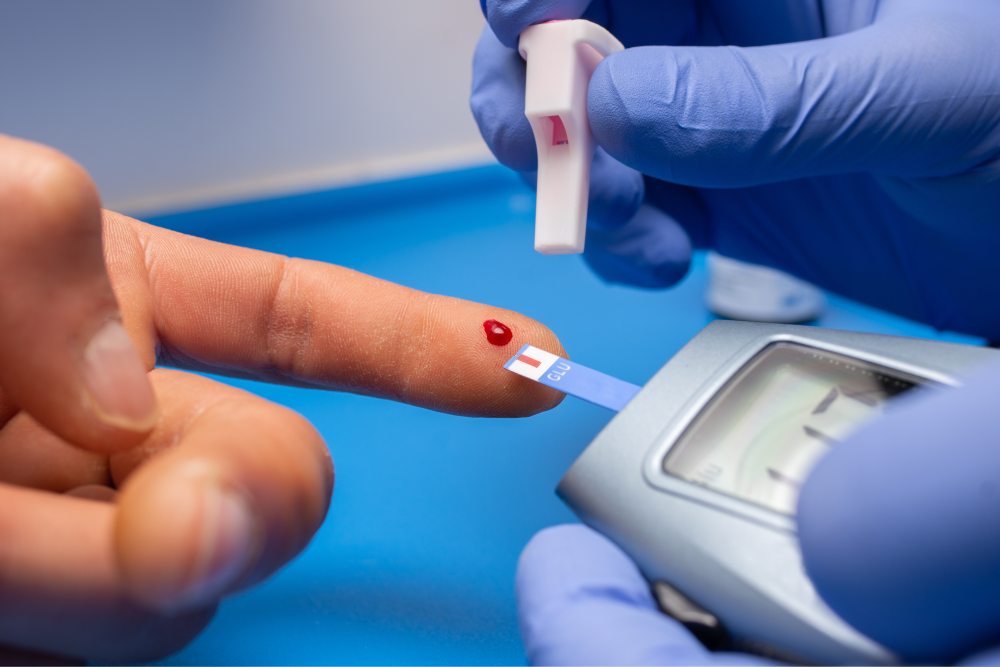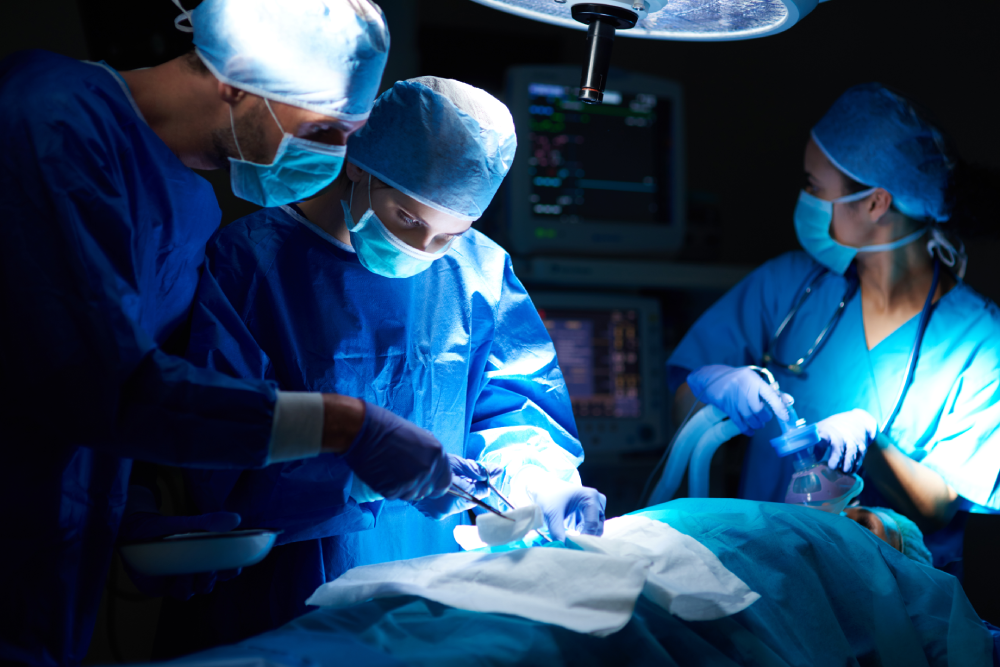Myomectomy
- Home
- Our Department
- Gynaecology
- Myomectomy



Myomectomy surgery in Coimbatore
Myomectomy is a surgical operation used to remove uterine fibroids, also known as leiomyomas s). These noncancerous growths commonly occur in the uterus. Uterine fibroids are more common during the childbearing years, but they can appear at any age.
During a myomectomy, the surgeon’s objective is to remove symptom-causing fibroids and rebuild the uterus. In contrast to a hysterectomy, which removes your whole uterus, a myomectomy removes only the fibroids while leaving your uterus intact.
Women who get a myomectomy report a reduction in fibroid symptoms, such as heavy menstrual flow and pelvic discomfort.
Diagnosis at Dr.Muthus Hospitals
Your surgeon may choose one of three surgical techniques for myomectomy depending on the size, number, and location of your fibroids.
Myomectomy of the abdomen
Your surgeon will create an open abdominal incision to reach your uterus and remove fibroids during an abdominal myomectomy (laparotomy). If at all feasible, your surgeon will want to create a low, horizontal (“bikini line”) incision. Larger uteruses necessitate vertical incisions.

Laparoscopic Myomectomy
Your surgeon accesses and removes fibroids using many tiny abdominal incisions during laparoscopic myomectomy, which is a minimally invasive procedure. Women who have a laparoscopy had less blood loss, shorter hospital stays and recuperation, and reduced incidence of problems and adhesion development following surgery as compared to women who have a laparotomy.
The fibroid may be broken into pieces and removed by a tiny incision in the abdominal wall. Other times, the fibroid is removed through a larger incision in your belly so that it is not cut into pieces. In rare cases, the fibroid may be removed through a vaginal incision (colpotomy).
Myomectomy via hysteroscopy surgery
A hysteroscopic myomectomy may be recommended by your surgeon to treat tiny fibroids that protrude considerably into your uterus (submucosal fibroids). The fibroids are accessed and removed by the surgeon using devices put via your vagina and cervix into your uterus.
- This is usually followed by a hysteroscopic myomectomy:
- A tiny, illuminated tool is inserted through your vagina and cervix and into your uterus by your surgeon. He or she will most likely employ a wire loop resectoscope to electrically cut (resect) tissue or a hysteroscopic morcellator to manually cut the fibroid with a blade.
- To enlarge your uterine cavity and allow inspection of the uterine walls, a transparent liquid, generally a sterile salt solution, is introduced into your uterus.
- Using a resectoscope or a hysteroscopic morcellator, your surgeon shaves sections off the fibroid and removes them from the uterus until the fibroid is fully gone. Large fibroids may not be completely removed in a single surgery, necessitating a second.
Results
- Outcomes of a myomectomy may include:
- Symptomatic alleviation: Most women enjoy alleviation from troublesome signs and symptoms after myomectomy surgery, such as heavy menstrual bleeding and pelvic discomfort and pressure.
- Fertility enhancement: Within a year following surgery, women who have a laparoscopic myomectomy, have a favourable pregnancy result. After a myomectomy, it is recommended that you wait three to six months before attempting to conceive to enable your uterus to recover.
- Fibroids that your doctor does not find during surgery or fibroids that are not entirely removed may develop and cause problems in the future. New fibroids can form, which may or may not necessitate therapy. Women with a single fibroid have a reduced probability of acquiring new fibroids – known as the recurrence rate – than women with several tumours. Women who conceive following surgery have a decreased chance of acquiring new fibroids than women who do not conceive.
- Women who have new or recurrent fibroids may have access to nonsurgical therapies in the future. These are some examples:
- Embolism of the uterine artery (UAE). Microparticles are injected into one or both uterine arteries, restricting blood flow.
- Volumetric thermal ablation using radiofrequency (RVTA). Radiofrequency radiation is used to wear away (ablate) fibroids by friction or heat, which is directed by an ultrasound probe, for example.
- Focused ultrasonic surgery with MRI guidance (MRgFUS). Magnetic resonance imaging is used to guide the use of a heat source to ablate fibroids (MRI).
FAQs
In the hours leading up to your procedure of Myomectomy surgery in Coimbatore, you must fast – that is, you must refrain from eating or drinking anything. Follow your doctor’s advice on the number of hours.
Whether you’re taking medication, check with your doctor to see if you should adjust your normal drug schedule in the days leading up to surgery. Inform your doctor about any OTC drugs, vitamins, or other dietary supplements you’re taking.
You may be given one of the following forms of anaesthetic depending on your surgical procedure of Myomectomy in Coimbatore:
Anaesthesia in general. With general anaesthesia, you will be completely unconscious, and a tube will be inserted into your neck. General anaesthesia is used for laparoscopic myomectomy and, more commonly, abdominal myomectomy; it is also used for hysteroscopic myomectomy on occasion.
Anaesthesia monitoring (MAC). When you’re under this form of anaesthetic, you usually don’t recall anything and fall completely asleep. You do not have a tube in your throat. Because it is a less intrusive treatment that needs less anaesthetic, MAC is frequently utilised for hysteroscopic myomectomy.
Your doctor may advise you to undertake the following to reduce the risks of Myomectomy surgery in Coimbatore:
- Vitamins and iron supplements: If you have iron deficiency anaemia as a result of heavy menstrual cycles, your doctor may advise you to take iron supplements and vitamins to boost your blood count before surgery.
- Hormonal therapy: Hormonal therapy prior to surgery is another option for treating anaemia. To halt or reduce your menstrual flow, your doctor may prescribe a gonadotropin-releasing hormone (GnRH) agonist, birth control tablets, or other hormonal therapy. A GnRH agonist, when used as treatment, prevents the synthesis of oestrogen and progesterone, thus preventing menstruation and enabling you to replenish haemoglobin and iron reserves.
- Fibroid shrinkage therapy: Some hormonal therapies, such as GnRH agonist therapy, can shrink your fibroids and uterus sufficiently to allow your surgeon to use a minimally invasive surgical approach, such as a smaller, horizontal incision rather than a vertical incision, or a laparoscopic procedure rather than an open procedure.
Myomectomy may be recommended by your doctor if fibroids are causing bothersome symptoms or interfering with your routine activities. If you require Myomectomy surgery in Coimbatore, choose a myomectomy rather than a hysterectomy for uterine fibroids.
- You intend to have children.
- Your doctor believes that uterine fibroids are interfering with your fertility.
- You wish to save your uterus.
Complications are uncommon after Myomectomy surgery in Coimbatore. Nonetheless, the technique presents a distinct set of obstacles. Myomectomy has the following risks:
- Excessive bleeding: Many women with uterine leiomyomas already have low blood counts (anaemia) as a result of excessive monthly bleeding, putting them at a higher risk of complications from blood loss. Your doctor may advise you to increase your blood count before surgery.
- Scar tissue Incisions into the uterus to remove fibroids can result in adhesions, which are bands of scar tissue that can form following surgery. Laparoscopic myomectomy, as opposed to abdominal myomectomy, may result in fewer adhesions (laparotomy).
- Complications during pregnancy or delivery If you get pregnant, a myomectomy may raise some risks during delivery. If your surgeon has to create a large incision in your uterine wall, the doctor who supervises your subsequent pregnancy may advise a C-section to avoid uterine rupture during birth, an extremely rare pregnancy problem. Fibroids have also been linked to pregnancy problems.
- A hysterectomy is a rare possibility. If the bleeding is unmanageable or additional abnormalities are discovered in addition to the fibroids, the surgeon may have to remove the uterus.
- It is extremely unlikely that a malignant tumour would spread. A malignant tumour can occasionally be misdiagnosed as a fibroid. Taking out the tumour, especially if it’s split into little pieces (morcellation) to be removed through a small incision, might cause cancer to spread. This is more likely to happen after menopause and as women get older.







